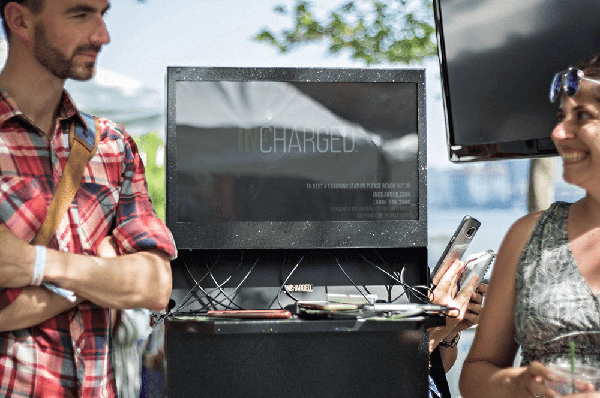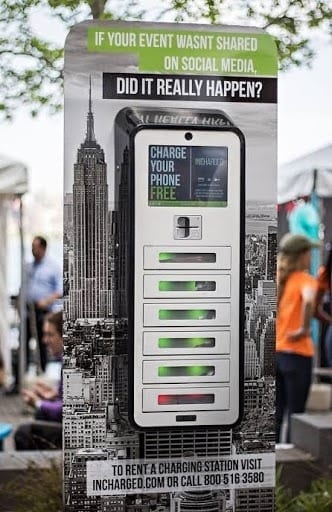A recent article on AdAge poses a crucial question to digital marketers: Mobile advertisements are inherently unnatural due to the way users consume content on small screens – but with more consumers accessing the internet on mobile devices than on laptops and desktop computers combined, how can we effectively market using display advertising?
Media consumption is rapidly shifting – instead of reading magazines, surfing the internet, and watching TV to discover content served by marketers and writers, users are discovering content by interacting with taste-making individuals and people they already know on social media. Marketers have realized that display advertising in a tiny amount of real estate on a small mobile screen is not effective, and have shifted tactics in an attempt to market via specialized applications. But that’s not a viable solution for all brands.
What if your marketing took advantage of the widespread usage of smartphones without relying on tiny display screens? What if you had a captive audience and a large HD screen to serve them advertising messages – and they appreciated it?
InCharged cell phone charging stations offer just that – Ads on phone charging station. Consumers plug their smartphone into a cell phone charging kiosk equipped with a large HD screen, programmed with your marketing messages. Appreciative of the extra juice you’re providing them with, they view your advertisements and associate your brand with an understanding of their needs. It’s the new generation of mobile advertising and display advertising in one convenient, affordable, effective package.
The mobile advertising industry is facing problems such as scalability, creative innovation, lack of attribution transparency, fraud statistics, conversions and view-ability among others in the mobile advertisement market.
According to Adroll, 41% of the mobile marketers in the United States said that the lack of attribution transparency is their biggest challenge following the 37% who believe that conversion if their biggest challenge in mobile advertising.
In the early days of mobile advertising, the marketers were very enthusiastic as the platform was new, the user-base was increasing, people were building more apps and more apps means more advertising.
Soon the bubble popped as the marketers realize that there’s nothing new but the small screen size. The placement of the ads on the screen, the size of the ads, and the type of ads, practically only these were the major differences of the mobile advertisements over the desktop ads. Similar ads could be run on a desktop with a bigger and better screen resolution and with better conversion rate options.

The mobile ads didn’t add to the creative scale of the ads as they were ads in a different size only. There is a fixed size for header, footer, half page, full-page banners.
And, the new smaller ad size isn’t actually helping. The text, the graphics, and the CTA buttons are so small that a grown adult’s huge finger base isn’t doing the trick. And, if they increase the ad size, then the application’s User Interface gets interrupted. It might hamper the user experience of the user on that particular app. So, screen size and even smaller ad size is still a huge problem.
The only benefit the marketers find is in the increasing user-base. More mobile companies with their own operating systems jumped in making the market even bigger. However, the marketers are unable to leverage the increased user-base because there are no authentic analytical tools to provide authentic analytical data to the marketers. They feel like they’re shooting in a foggy night. They aren’t able to track their ads on mobile well as they do on the desktop. They aren’t able to set the target audience for mobile ads. Some of the marketers say that they don’t know where their ads are getting displayed.
This lack of critical data wasn’t allowing the marketers to control the budget and ROI of the investments.
In addition to that, the conversion rate is dropping as well. It seems no point to advertise where the users are not getting converted. The realization ‘mobile is a great platform, but it hasn’t been so effective for advertisers’ was inevitable.
And, then the marketers started speculating that if more people are spending time on mobile and the time spent is also increasing on a daily basis, why the mobile advertisement has been so ineffective? Why they haven’t been able to crack the small screen advertising.
And, the major reasons that came up are…
Mobile is More Personal

Literally, you need a login password to use any app you download on your device. You first need to create a personal account on that application, unlike desktop browsing where you browse websites without giving personal information. Consumers don’t like an annoying ad disrupt their experience on their personal device. If such an ad is displayed on a television, they can simply switch to another channel. But, this can’t be done in case of mobile ads.
The Desktop Ads are Relatable

The Ads you see on the websites are based on the relevant searches you’ve made on the search engine. Even on social media, you see the ads on your feed relevant to the pages you visited. The filtration and relevancy of the ads are authentic. There’s no such filtration on mobile ads. Hence, the conversion rate is not as high as on the desktop or websites. There aren’t many tools that give you the refined data about the audience.
The purpose and the use of the medium
As in the word ‘mobile’, people often use it when they are travelling or in the middle of something else. There’s no ‘mobile-time’ as there is ‘television time’ or ‘reading a magazine time’. The attention span of everything on the screen is less. They want to do what they want to do in that little time. Most of the people don’t bother what else is on the screen when they use their mobile on the go. And, if they see a video ad, they just look for the skip button.
All these situations combined established strong arguments of why mobile ads aren’t that effective. Mobile phones are personal, the ads on the websites are more relevant to the searches and the attention span on the mobile is less that they find inconvenience in viewing the small-sized ads.
How InCharged Can Help

InCharged has intelligently connected mobile and advertising that tackles all the issues that marketers face in the mobile advertising world.
InCharged connected the mobile phones to the advertisements through a charging port- Ads on phone charging station. With its Flex charging Kiosk, it has given a new advertising platform to the marketers who want to target mobile users. And, this also gives them the freedom to choose the medium of the advertisement.
People can only use mobile phones when they are charged. When the battery goes out, they just have to charge it, no matter where they are. And, they carry a power bank only when they have a pouch or a small bag to carry. Places where they don’t carry the bag, the power banks don’t work. So, they turn to the charging stations.
You might have seen these charging stations at shops, offices, concerts, and public places. They are pretty common in the waiting areas or a car washer or a dentist clinic.
InCharged has allowed marketers to use the charging station as their advertisement platform. And, that’s what changing the mobile advertisement for the better. Marketers can target mobile users without disrupting them.
And, Ads on phone charging station are not in-the-face forced advertisements. This is added seamlessly in their experience without interrupting anything. Phone charging station ads are just giving them something to view, discover and explore while they are waiting for their phones to get charged. This is actually utilizing their time.
Bigger screen, better display, and without interruption are just how the user wants to see the advertisements.
To display your ads on an InCharged station, you can use wrap templates, screen templates, setup up your video to display your brand, product and services.
The phones are not charged in a few minutes. And, most of the people stand by their phones while it is getting charged. That’s the time when Ads on phone charging station screens or the wraps work their magic.
The store owners who have installed the kiosk in their stores have experienced more footfall and also an increase in the time spent by each customer in the shop. People find it convenient to visit the places that have a charging station. This means, they do notice the kiosk but it solves their problem. It offers them a solution. With that mindset, when they see ads on the charging stations, they are more likely to pay attention to the ads.
The charging station ads don’t go unnoticed. However, they should be interesting enough to grab people’s attention.
InCharged’s charging flex, charging power table, charging locker and other related products come with a slot for advertising. Explore each of the products here in detail.
Marketers wanted mobile ads because more and more people were spending time on their phones. The charging station ads are getting popular because people HAVE to spend time on the charging stations. The attention span is more. The places where the ads are installed there are security cameras as well. Marketers can see how people are responding to their ads. They can also see how they are responding to other ads, which is an essential data to tweak the ads to make them effective.

